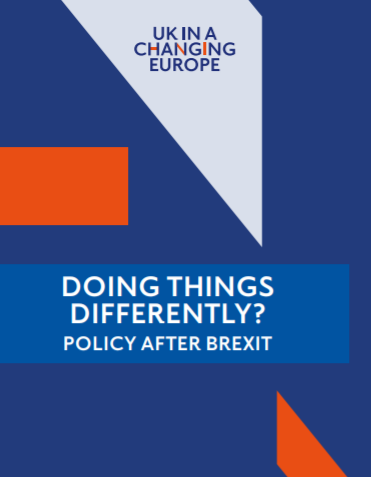This is a post in two parts. The first part addresses my methodological concerns with research on digital technologies and public procurement (and public governance more generally), as exemplified by a recent paper. The second part collects the response by the authors of that paper.
This pair of points of view are offered together to try to create debate. While the authors found my comments harsh (I cannot judge that), they engaged with them and provided their own counter-arguments. In itself, I think that is laudable and already has value. Any further discussion with the broader community, via comments (or email), would be a bonus.
Part 1: The perils of not carrying out technology-centered research into digital technologies and procurement governance -- re Sava and Dragos (2022)
When I started researching the interaction between digital technologies and procurement governance, it was clear to me that a technology-centered legal method was required. A significant amount of the scholarship that is published fails to properly address the governance implications of digital technologies because it simply does not engage with their functionality—or, put otherwise, because the technology is not understood. This can lead to either excessive claims of what ‘technology fixes’ can achieve or, perhaps even more problematic, it can generate analysis that is based on a misleading, shallow and oftentimes purely literal reading of the labels with which the technology is described and referred to.
A recent paper on smart contracts and procurement clearly exemplifies this problem: N.A. Sava & D. Dragos, ‘The Legal Regime of Smart Contracts in Public Procurement’ (2022) Transylvanian Review of Administrative Sciences, No. 66 E/2022, pp. 99–112.
Conceptual problems
From the outset, the paper is at pains to distinguish blockchain and smart contracts, and proposes ’a needed conceptual distinction that would fit the public contracts theory: before a contract is signed, it is logical to refer to blockchain technology when discussing digital means of awarding the procurement contract. As a result of this award, the concluded contract could be a “smart contract”’ (at 101).
The trap into which the paper falls, of course, is that of believing that blockchain and smart contracts can be distinguished ‘conceptually’ (in a legal sense), rather than on the basis of their technological characteristics and functionality.
Blockchain is a type of distributed ledger technology (DLT). In some more detail: ‘A DLT system is a system of electronic records that enables a network of independent participants to establish a consensus around the authoritative ordering of cryptographically-validated (‘signed’) transactions. These records are made persistent by replicating the data across multiple nodes, and tamper-evident by linking them by cryptographic hashes. The shared result of the reconciliation/consensus process - the ‘ledger’ - serves as the authoritative version for these records’ (M Rauchs et al, Distributed Ledger Technology Systems. A Conceptual Framework (2018), at 24). Blockchain is thus a ‘passive’ digital technology in the sense that it cannot perform any sort of automation of (decision-making) processes because it simply serves to create a data infrastructure.
In turn, smart contracts are a type of ‘active’ (or automating) digital technology that can be deployed on top of a DLT. In more detail: ‘Smart contracts are simply programs stored on a blockchain that run when predetermined conditions are met. They typically are used to automate the execution of an agreement so that all participants can be immediately certain of the outcome, without any intermediary’s involvement or time loss. They can also automate a workflow, triggering the next action when conditions are met’ (IBM, What are smart contracts on blockchain? (undated, accessed 1 July 2022)).
What this means is that, functionally, ‘smart contracts’ may or may not map onto the legal concept of contract, as a ‘smart contract’ can be a unilaterally programmed set of instructions aimed at the automation of a workflow underpinned by data held on a DLT.
Taking this to the public procurement context, it is then clear that both the management of the award process and the execution of an awarded public contract, to the extent that they could be automated, would both need to be instrumentalised via smart contracts plus an underlying blockchain (I would though be remiss not to stress that the practical possibilities of automating either of those procurement phases are extremely limited, if at all realistic; see here and here, which the paper refers to in passing). It does not make any (technological/functional) sense to try to dissociate both layers of digital technology to suggest that ‘blockchain technology [should be used] when discussing digital means of awarding the procurement contract. As a result of this award, the concluded contract could be a “smart contract”’ (Sava & Dragos, above, 101).
This is important, because that technology-incongruent conceptual distinction is then the foundation of legal analysis. The paper e.g. posits that ‘the award of public contracts is a unilateral procedure, organized by state authorities according to specific rules, and that automation of such procedure may be done using blockchain technology, but it is not a ‘“smart contract” (sic). Smart contracts, on the other hand, can be an already concluded procurement contract, which is executed, oversaw (sic) and even remedied transparently, using blockchain technology (sic)’ (ibid, 103, emphasis added).
There are three problems here. First, the automation of the procurement award procedure carried out on top of a DLT layer would require a smart contract (or a number of them). Second, the outcome of that automated award would only be a ‘smart contract’ in itself if it was fully coded and its execution fully automated. In reality, it seems likely that some parts of a public contract could be coded (e.g. payments upon invoice approval), whereas other parts could not (e.g. anything that has to happen offline). Third, the modification of the smart contract (ie coded) parts of a public contract could not be modified (solely) using blockchain technology, but would require another (or several) smart contract/s.
Some more problems
Similarly, the lack of technology-centricity of the analysis leads the paper to present as open policy choices some issues that are simply technologically-determined.
For example, the paper engages in this analysis:
… the question is where should the smart public contracts be awarded? In the electronic procurement systems already developed by the different jurisdictions? On separate platforms using blockchain technology? The best option for integrating smart contracts into the procurement procedures may be the already existing digital infrastructure, therefore on the electronic procurement platforms of the member states. We believe this would be an optimal solution, as smart contracts should enhance the current electronic procurement framework and add value to it, thus leveraging the existing system and not replacing it (at 103, emphasis added).
Unless the existing electronic procurement platforms ran on blockchain—which I do not think they do—then this is not a policy option at all, as it is not possible to deploy smart contracts on top of a different layer of information. It may be possible to automate some tasks using different types of digital technologies (e.g. robotic process automation), but not smart contracts (if the technological concept, as discussed above, is to be respected).
The problems continue with the shallow approach to the technology (and to the underlying legal and practical issues), as also evidenced in the discussion of the possibility of automating checks related to the European Single Procurement Document (ESPD), which is a self-declaration that the economic operator is not affected by exclusion grounds (see Art 59 Directive 2014/24/EU).
The paper states
In the context of automatized checks, the blockchain technology can provide an avenue for checking the validity of proofs presented. The system could automate the verifications of the exclusion grounds and the selection criteria by checking the original documents referenced in the ESPD in real time (that is, before determining the winning tender). The blockchain technology could verify the respect of the exclusions grounds and rule out any economic operator that does not comply with this condition (at 104, emphasis added).
This is a case of excessive claim based on a misunderstanding of the technology. A smart contract could only verify whatever information was stored in a DLT. There is no existing DLT capturing the information required to assess the multiplicity of exclusion grounds regulated under EU law. Moreover, the check would never be of the original documents, but rather of digital records that would either be self-declared by the economic operators or generated by a trusted authority. If the latter, what is the point of a blockchain (or other DLT), given that the authority and veracity of the information comes from the legal authority of the issuer, not the consensus mechanism?
There are also terminological/conceptual inconsistencies in the paper, which does not consistently stick to its conceptual distinction that blockchain should be used to refer to the automation of the award procedure, with smart contracts being reserved to the awarded contract. For example, it (correctly) asserts that ‘When it comes to selection criteria, the smart contract could also perform automatic checks on the elements listed in the contract notice’ (at 104). However, this can creates confusion for a reader not familiar with the technology.
Other issues point at the potentially problematic implications of analysis based on a lack of in-depth exploration of the technologies. For example, the paper discusses a project in Colombia, which ‘created a blockchain software that allowed for record keeping, real time auditability, automation through smart contracts and enhanced citizen engagement’ (at 105). After limited analysis, the paper goes on to stress that ‘Our opinion is that the system in Colombia resembles very much the regular e-procurement systems in Europe. For instance, Romania’s SEAP (Electronic Public Procurement System) insures exactly the same features — non-alteration of bids, traceability and automatic evaluation of tenders (price). So, the question is whether the smart contract system in Colombia is anything else than a functional e-procurement system’ (ibid). This reflects a conflation of functionality with technology, at best.
In the end, the lack of technology-centered (legal) analysis significantly weakens the paper and makes its insights and recommendations largely unusable.
The need for a technology-centric legal methodology
To avoid this type of problems in much-needed legal scholarship on the impact of digital technologies on public governance, it is necessary to develop a technology-centric legal methodology. This is something I am working on, in the context of my project funded by the British Academy. I will seek to publish a draft methodology towards the end of the year. Comments and suggestions on what to take into account would be most welcome: a.sanchez-graells@bristol.ac.uk.
Part 2: authors’ response
Dear Professor,
As a first-year PhD student, being read and offered feedback, especially in the incipient phase of the research, is an amazing learning opportunity. Not all PhD students have the chance to exchange on their topic, and even more with a revered name in the doctrine of public procurement like yourself, therefore am I am very grateful for this debate (Sava).
The co-author Dragos also shares the respect and gratitude for the scholarly critique, although considers the comments rather theoretical and lacking an alternative constructive conclusion.
Concerning the need to conduct a ʻtechnology-centered legal’ research, I fully agree, and I will try to integrate more technology-centered research into the thesis.
However, being lawyers, we believe that technology-centered research does not take into account the established concepts from law and especially public procurement law, therefore an interdisciplinary perspective is needed.
Now we will address the arguments you formulated.
1) Conceptual problems
Concerning the definitions of blockchain and smart contract that you offer, we are of course familiar with them and agree with them.
We agree that blockchain-based smart-contracts could automate certain aspects of the procurement procedures, both in the award and in the execution phase. In our paper, we acknowledge the fact that ʻsmart contracts could automate any process that can be presented as an IF+THEN formula’ (p. 100-101). In this sense, like you noticed, we give the example of automating the check of the selection criteria: ‘When it comes to selection criteria, the smart contract could also perform automatic checks on the elements listed in the contract notice’ (p. 104).
However, beyond these two concepts (blockchain and smart contracts), there is a third concept, that of a ʻsmart legal contract’.
DiMatteo, L., Cannarsa, M. and Poncibò, C., in The Cambridge Handbook of Smart Contracts, Blockchain Technology and Digital Platforms (Cambridge: Cambridge University Press, 2019, p. 63) draw attention to the inadequacy of the terminology: ʻFor blockchain-based smart contracts, a useful dichotomy can be drawn between the ‘smart contract code’ that is, the computer code that is ‘– stored, verified, and executed on a blockchain and the ‘smart legal contract’ - a complement (or maybe even a substitute) for a legal contract that applies that technology. In essence, a ‘smart legal contract’ is a combination of the ‘smart contract code’ and traditional legal language.
'The LawTech panel recently decided that (...) smart contracts could still be legally binding provided that they include the typical elements of a contract.’ (https://juro.com/learn/smart-contracts, consulted on the 2nd of July 2022). Like you mention, ‘functionally, ‘smart contracts’ may or may not map onto the legal concept of contract, as a ‘smart contract’ can be a unilaterally programmed set of instructions aimed at the automation of a workflow underpinned by data held on a DLT’.
Therefore, the correct conceptual distinction would be between ʻsmart contract code’ and ʻsmart legal contract’. In the paper, we tried to focus on the smart legal contract, and discuss its compatibility with public procurement contracts. Through the conceptual distinction, we actually wanted to point out the fact that it would be difficult to imagine a smart legal contract (legally binding) exclusively in the award phase. On the other hand, concerning the ʻsmart contract code’ we agree that it could be applicable to both the award and the execution phase, although the terminology remains debatable.
2) The question of where to integrate smart contracts
We state that ʻThe best option for integrating smart contracts into the procurement procedures may be the already existing digital infrastructure, therefore on the electronic procurement platforms of the member states. We believe this would be an optimal solution, as smart contracts should enhance the current electronic procurement framework and add value to it, thus leveraging the existing system and not replacing it’ (p. 103).
Of course, we do not believe that the current system works on blockchain (in the paper we explore why this would be a difficult task), but we did discuss the integration of emerging technologies in the existing context of e-procurement tools. However, this would be an integration among the e-procurement tools, not on top of the existing tools, as adequate infrastructure would be needed.
Actually we mean exactly what you pointed out in your conclusions, so we are in agreement here: some aspects of the procedure could be automated, yet the rest of the procedure could function based on the rules already in place. By the idea of not replacing the e-procurement system, we mean automatizing some punctual aspects, but not replacing the entire system.
3) The ESPD
The idea was that smart contracts could automatically check certain documents, such as the ones referenced in the ESPD.
In our text, we only discuss the idea of a verification, we do not describe in detail how this should be performed and we do not state that the DLT should capture on its own ʻthe information required to assess the multiplicity of exclusion grounds regulated under EU law’. Of course, these documents would need to be uploaded to the DLT and the uploaded documents would have a digital form. By ‘original document’ we refer to the document per se, the reference document and not the simple declaration from the ESPD.
An analogy of this idea could be made with the Canadian ‘Supplier information registration system, which facilitates the registration of supplier information on blockchain to validate it against different records and to validate it in an automated way’ (NTT Data Presentation at EPLD Meeting, May 2022).
4) The Colombian example
We could not understand your critique here. The referenced example described a system for selecting economic operators in public procurement (for more information: https://www.weforum.org/reports/exploring-blockchain-technology-for-government-transparency-to-reduce-corruption/), which we believe is comparable with a regular e-procurement portal.
5) Conclusions
Through our analysis, we intended to raise the following question: would automating some aspects of the public procurement procedure through “smart contracts” ensure the same characteristics and guarantees as the ones offered by an e-public procurement system of an EU member state? In that case, what is the added value of “smart contracts” in public procurement? It is a research question that we will try to focus on in the future, we merely pose it here.
This paper is an exploratory and incipient one. For the moment, our goal was to raise some questions and to explore some potential paths. Apart from theoretical “what ifs”, it is hard to find specificities of assertions that new digital technologies will definitely have numerous and game-changing applications in the procurement process, as long as the procurement process is still managed unilaterally by public bodies and entertains a public law regime.
The intention is to challenge a rather theoretical assumption on the role of digital technologies in public procurement and subsequently trying to find real, practical examples or applications, if any.
In no circumstance did we state that we are formulating policy recommendations, this was misunderstood. Only after extensive research conclusions may lead to policy recommendations but we are still far from that moment.
However, we believe that in order to actually draw some conclusions on the use of such technologies in public procurement, scholars should delve in more depth into the topic, by critically assessing the current literature in the field and trying to have an interdisciplinary (legal, technological and managerial) look at the topic. As of now, the literature is too theoretical.
In other words, in our opinion, the exclusive tech-centered approach that you suggest would be equally harmful as an exclusively legal one.
Thank you for this chance of a constructive dialogue, we are looking forward to future exchange on the topic.





















